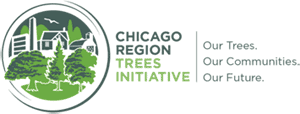Advocacy- The act or process of supporting a cause or proposal (Merriam-Webster)
Canopy Cover- The proportion of land area covered by tree crowns, as viewed from the air (California Urban Forests Council and the Inland Urban Forest Council)
Climate Change- Any significant change in the measures of climate lasting for an extended period of time. In other words, climate change includes major changes in temperature, precipitation, or wind patterns, among other effects, that occur over several decades or longer. (19january2017snapshot.epa.gov/climatechange_.html)
Emerald Ash Borer- Emerald ash borer (EAB), Agrilus planipennis Fairmaire, is an exotic beetle that was discovered in southeastern Michigan near Detroit in the summer of 2002. The adult beetles nibble on ash foliage but cause little damage. The larvae (the immature stage) feed on the inner bark of ash trees, disrupting the tree's ability to transport water and nutrients. (www.emeraldashborer.info/index.cfm#sthash.hKvSyv2p.dpuf)
Established Trees- After a tree is planted, it takes time to establish or reestablish a normal, spreading root system on the new site to minimize susceptibility to stress and assure survival. Planting the tree properly and maintaining it until it is established- generally estimated at one year per caliper inch- will protect the substantial investment of the tree (Watson 1997; http://actrees.org/files/Research/tree_transplanting_watson.pdf; also helpful: Struve 2009, connection.ebscohost.com/c/articles/36463284/tree-establishment-review-some-factors-affecting-transplant-survival-establishment).
Forest Composition- Trees’ distribution in space (vertically and horizontally), as well as the size, age, and condition of species (Piana and Troxel 2014; scenariojournal.com/article/beyond-planting/)
Forest Management Plan- An essential tool based on recent tree inventory data and analysis of available staff, equipment, and budget resources for protecting urban trees. An urban forest management plan is an action plan that gives public works agencies detailed information, recommendations, and resources needed to effectively and proactively manage public trees.(APWA; www2.apwa.net/documents/About/CoopAgreements/UrbanForestry/UrbanForestry-4.pdf)
Green Infrastructure- An interconnected network of green space that conserves natural ecosystem values and functions and provides associated benefits to human populations (Benedict and McMahon 2002).
Impervious Ground Cover- These surfaces, such as roads, buildings, sidewalks, and parking lots, facilitate transportation and provide shelter, but also can negatively impact the environment. Increased impervious surfaces enhance local temperatures and heat islands, which consequently affects building energy use, human comfort and health, ozone production, and pollutant emissions in cities (Nowak and Geenfield 2012; www.itreetools.org/Canopy/resources/Tree_and_Impervious_Cover_change_in_...)
Invasive Species- A species that has the ability to thrive and spread aggressively outside its native range. A naturally aggressive species may be especially invasive when it is introduced to a new habitat (USDA National Invasive Species Information Center; http://www.invasivespeciesinfo.gov/plants/main.shtml). Invasive species can include plants, animals, or pathogens.
Invasive Traits- Traits that enable plants to spread aggressively
LiDAR Imagery (Light Detection and Ranging)- A remote sensing technology that collects 3-dimensional point clouds of the Earth’s surface. This technology is being used for a wide range of applications including high-resolution topographic mapping and 3-dimensional surface modeling as well as infrastructure and biomass studies (U.S. Geological Survey; lta.cr.usgs.gov/LIDAR).
Oak Ecosystems- Natural areas that are characterized by oak dominance and generally fall into four categories: forests canopy cover, woodlands, savannas, and barrens. These categories are differentiated by canopy density and composition of associated plant communities. Oak Ecosystems are an important component of the Chicago Region’s natural history and are facing many threats, including invasive species, human development, and lost disturbance regimes (Oak Ecosystem Recovery Plan).
Operational Capacity- A measure of the ability of a land manager or community to maintain and grow their portion of the urban forest sustainably.
Tree Age Diversity- A measure of diversity within a forested community that accounts for the evenness of trees and species within different age classes. It’s important to have trees at all stages of development so there is a consistent existence of mature trees, which provide the most significant benefits.
Tree Care- Steps taken to establish and grow a tree, such as mulching, watering, and pruning.
Tree Inventory- a record of the location, characteristics, and assessment of individual trees within a well-defined group. However, inventory scale and complexity vary by the specific needs, goals, and resources of the local context. Inventories are typically accompanied by an analysis of the population—an inventory report. The urban forest can be separated into categories such as species or size classes, and assessments are made of their quantity and quality. In its simplest form, such analysis comprises a series of charts, tables, or maps from which the user can retrieve information. A more sophisticated form or inventory report is a management plan in which the implications of the data analysis are laid out in detail (International Society of Arborists; www.urbanforestanalytics.com/sites/default/files/pdf/Inventories_Pt1.pdf).
Tree Ordinance- These laws guide preservation, protection, maintenance and replacement of a community's trees. They also can protect the public from trees which pose a threat or danger due to disease or hazard conditions (The Morton Arboretum; www.mortonarb.org/trees-plants/community-trees-program/protecting-trees/...).
Tree Risk Assessment- An evaluation of threats to a tree's health or structure. The results of a tree risk assessment can provide tree owners and risk managers with the information to make informed decisions to enhance tree benefits, health, and longevity (ISA; www.isa-arbor.com/Credentials/ISA-Tree-Risk-Assessment-Qualification)
Tree Species Diversity- A measure of the diversity within an ecological community that incorporates both species richness (the number of species in a community) and the evenness of species' abundances (Encyclopedia of Earth)
Urban Forest- All publicly and privately owned trees within an urban area— including individual trees along streets and in backyards, as well as stands of remnant forest (Nowak et al. 2001).
Urban Tree Canopy- Urban tree canopy is the amount of land sheltered by the crowns of trees and is a useful measure of the extent and potential function of the urban forest. Information about the health, nature, extent, and dynamics of the urban forest can guide supportive land use, transportation, economic, and environmental policies (Makra and Dwyer 2010; http://www.cmap.illinois.gov/documents/10180/61012/Urban-forestry-strate...). Learn more about Urban Tree Canopy Assessments here.
